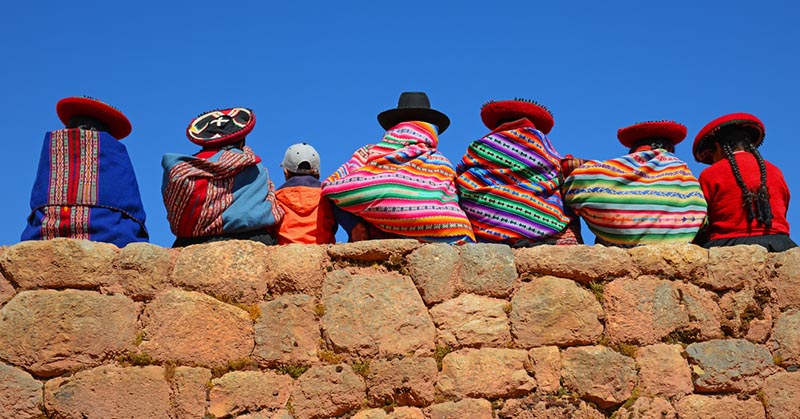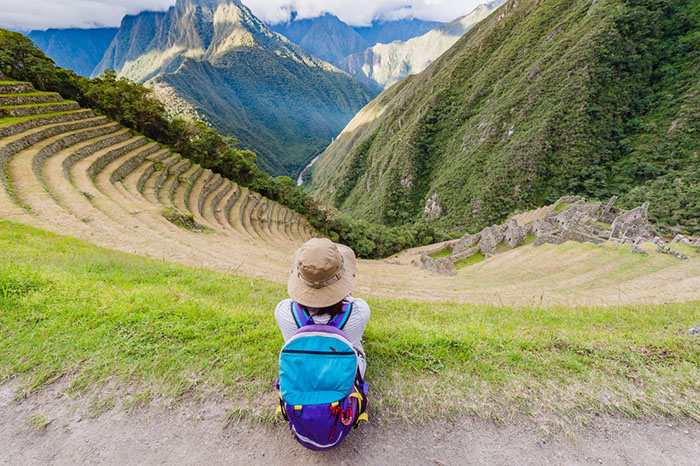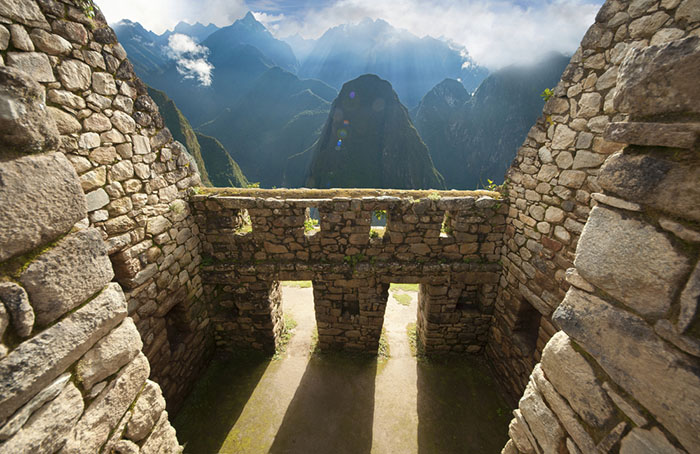Who Were the Incas


Many people who look to travel to Peru are drawn not only by its natural beauty and wonders – Lake Titicaca, Machu Picchu, the Amazon, and the Nazca Lines to name but a few, but also by the rich culture of the Incas.
Many people believe that the Incas were the only culture to leave an impact on Peru and the surrounding region, but this is a mistaken view. The Moche, Nazcans, Caral, Chavín, Tiwanaku, Chachapoyas, Chimu, and Wari cultures all pre-date the Incas. Still the architects of Machu Picchu have undoubtedly left the largest and most lasting impact on what is modern Peru.
Many visitors come to Peru with little knowledge about the Incas outside of this stunning architectural and engineering feat. While the local guides who work with Goway educate and inform with their wealth of expertise, the overall tapestry of the Incan culture and its ultimate demise can be lost in the often-overwhelming myriad of sights, sounds, and tastes of non-Incan Peru.
So to prep you for that dream Peru vacation, Goway presents a “capsule history” of the Incas.

Modern day Colombia, Ecuador, Peru, northern Chile, and Argentina were lands still shrouded in mystery in the 1400’s. Only recently had Columbus ‘discovered’ and claimed the New World in the name of Spain. Only recently had the conquest begun to take root with the usurping, destruction, and enslavement of the Aztec civilization by Cortes. Only recently had Balboa trekked across what is now Panama to become the first European to lay eyes on an ocean he named the Pacific. At Balboa’s side was a man named Francisco Pizzaro, who would shortly venture south into an unknown region based on rumors of a large civilization rich in gold and silver – the Incas.
The Inca people were a pastoral tribe in the Cusco area around the 12th century. Under the leadership of Manco Cápac, they formed the small city-state Kingdom of Cusco (Quechua Qusqu’Qosqo) – which means navel, or center – Cusco would grow to be the main capital of the Incan Empire.


The Incas considered their King, the Sapa Inca, to be the “child of the sun.” He never – in public at least – walked on the ground, he was always carried! In one myth, Manco Cápac was a son of the sun god Inti, so it makes sense that Manco Cápac himself was worshipped as a Sun God. According to the Inti legend, Manco Cápac and his siblings were sent up to the earth by the sun god and emerged from the cave of Pacaritambo, carrying a golden staff called tapac-yauri. Instructed to create a Temple of the Sun in the spot where the staff sank into the earth, they traveled to Cusco via underground caves and there built a temple in honor of their father Inti.
In 1438, the Incas, more a political group than a racial tribe, amalgamating languages, cultures, and peoples, began a far-reaching expansion under the command of Sapa Inca (paramount leader) Pachacuti-Cusi Yupanqui, whose name literally meant “earth-shaker.” During his reign, he and his son Tupac Yupanqui brought much of the Andes mountains (roughly modern Peru and Ecuador) under Inca control.


Timing is everything and at the Incan Empire’s height, its territory ran from modern day southern Colombia to northern Chile and Argentina, under control of the Inca king Huayna Capac. So large had the empire become that a second capital was created in modern Ecuador – Quito! Huáscar and Atahualpa, the sons of Huayna Capac, immediately went to war over the empire upon their father’s death. It all culminated with Huáscar departing Cusco to challenge his brother Atahualpa to a final battle in northern Peru. Though Atahualpa emerged victorious, his prize was an empire weakened by civil war and a smallpox epidemic introduced by the Spanish. It was this weakened empire that Pizzaro found upon making his historic entrance.
Pizarro’s first expedition to the New Worlds was in 1509, as first mate to Balboa. Then in 1527 he made his first expedition on his own to find a rumored civilization called the Incas.
It on this expedition, when members of his party were wavering on continuing that Pizarro drew a line in the sand, famously saying: “There lies Peru with its riches. Here, Panama and its poverty. Choose, each man, what best becomes a brave Castilian. For my part, I go to the south.” And so he did, as did 13 of his men – the Famous 13. They came across what would be called the Incan Empire and its vast wealth!
Pizarro returned to Spain in 1529 and received royal approval to conquer the region and be its viceroy. On his return in 1531, he received word of the Inca King being nearby. Following a trail of gold, he finally came across Atahualpa at camp in northern Peru – specifically Cajamarca. Atahualpa was on his own journey home, returning to Cusco to officially claim the kingdom and to begin rebuilding the empire after its civil war.
A meeting was arranged between the King and these “strange beings” dressed in metal, riding strange beasts (horses – never before seen by the Incas). In short, Pizzaro ambushed the King at this meeting and held him for ransom in an attempt to control the multitudes that vastly outnumbered his small band of conquistadores and priests.


A ransom of a room full of gold and a room full of silver was set. The Incas agreed and paid the ransom but Pizarro realized to control the masses he must remove their spiritual ruler, without whom the Incan Empire would be lost and at his mercy. Pizzaro killed Atahualpa by garroting him in public for all to see. Pizzaro then continued to march south heading for the capital Cusco. The Incas fled in his wake as he marched south, eventually escaping into the Amazon via the Sacred Valley and reportedly taking or hiding much of the gold and silver Cusco held. Hence the legend of lost Incan riches in the region. There is a similar legend of Inca gold in the jungles of Ecuador
The last true Inca king, Túpac Amaru, was finally captured and beheaded in Cusco’s main square in 1572, 39 years after the death of Altahualpa. This marked the official end of the Incan Empire.
With 168 men, 1 cannon, 27 horses and the ravaging effects of small pox (claiming between 60% and 94% of the population) Pizzaro and his men brought down an empire larger than the Roman Empire in less than 40 years.
In Lima, the city established by Pizzaro to funnel out all the riches of the Incan Empire to Panama and then onto Spain, Pizarro was murdered by the son of Diego de Almagro, a partner of Pizzaro’s who was killed in battle by Pizzaro supporters over territorial disputes. Pizzaro’s murder is recorded by history as an act of revenge.
Pizzaro had two sons – Juan and Francisco – by his wife Cuxirimay Ocllo Yupanqui, the wife of the Incan King Atahualpa whom took the Christian name of Dona Angelina. The Inca bloodline is purported to be around to this day.
The Incas came and went in a relatively short time, but left a cultural and spiritual impact felt to this day alongside hundreds, if not thousands of architectural reminders of their dominance and influence in the region. None is as impressive though as Machu Picchu in the heart of the Sacred Valley which itself is what was and remains, the heart of the Inca Empire.


